The new era of fully-crewed IMOCA racing begins today with the start of The Ocean Race Europe
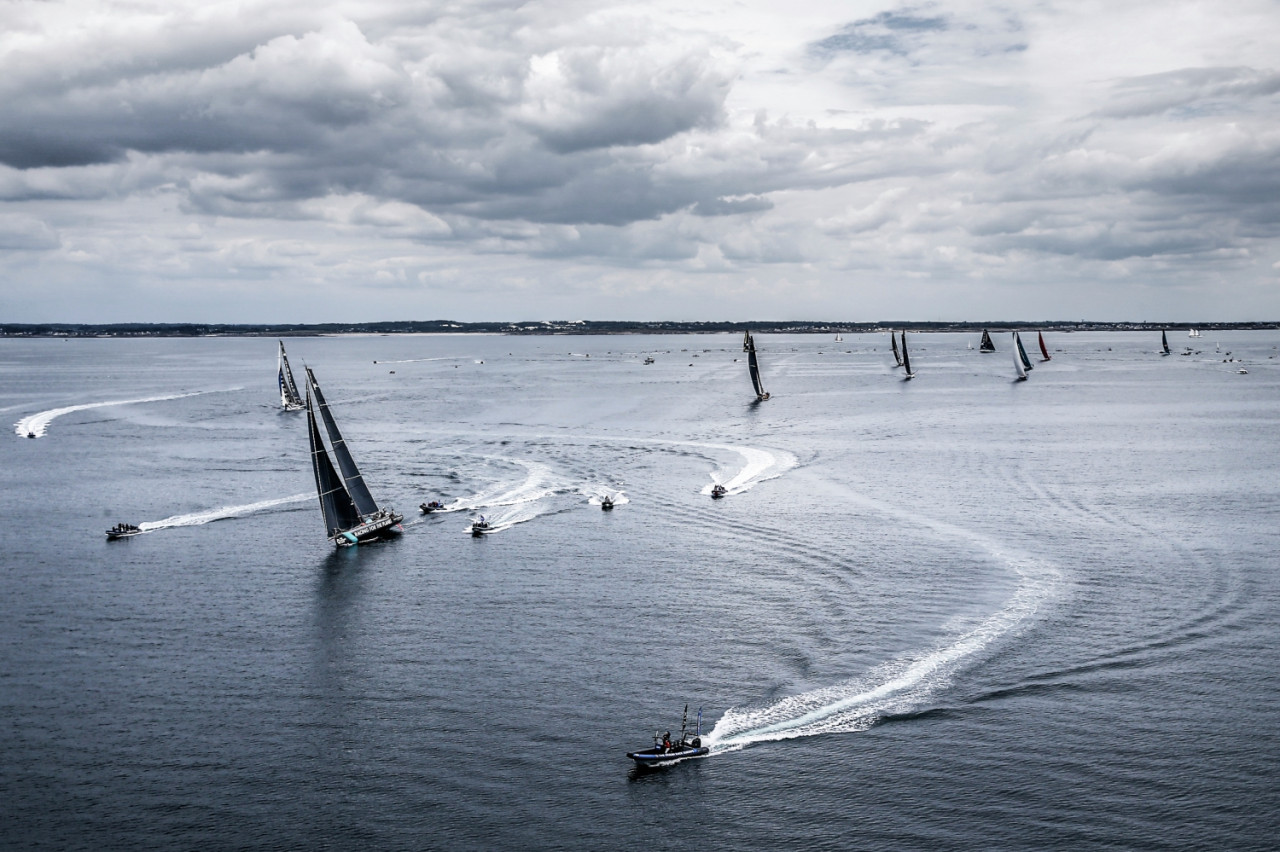
The Ocean Race Europe got underway from Lorient today in the lightest of conditions as, for the first time, sailing fans all over the world saw IMOCA 60s and VO65s racing alongside each other on their way to Cascais.
The start of the inaugural Ocean Race Europe is a historic moment for the IMOCA Class as it marks the beginning of a new era – fully-crewed ocean racing with this three-stage European contest starting the build-up to the Class’s first ever participation in the Ocean Race in 2022.
It also marks the opening salvos of the second IMOCA Globe Series Championship which runs until the end of the next Vendée Globe in 2025 and takes in nearly 20 solo, double-handed and crewed races.
It would, of course, have been nice to see the IMOCAs showing what they could do in the breeze, but the weather gods had other ideas as the combined 12-strong IMOCA and VO65 fleet crept away from the startline on flat water under overcast skies.
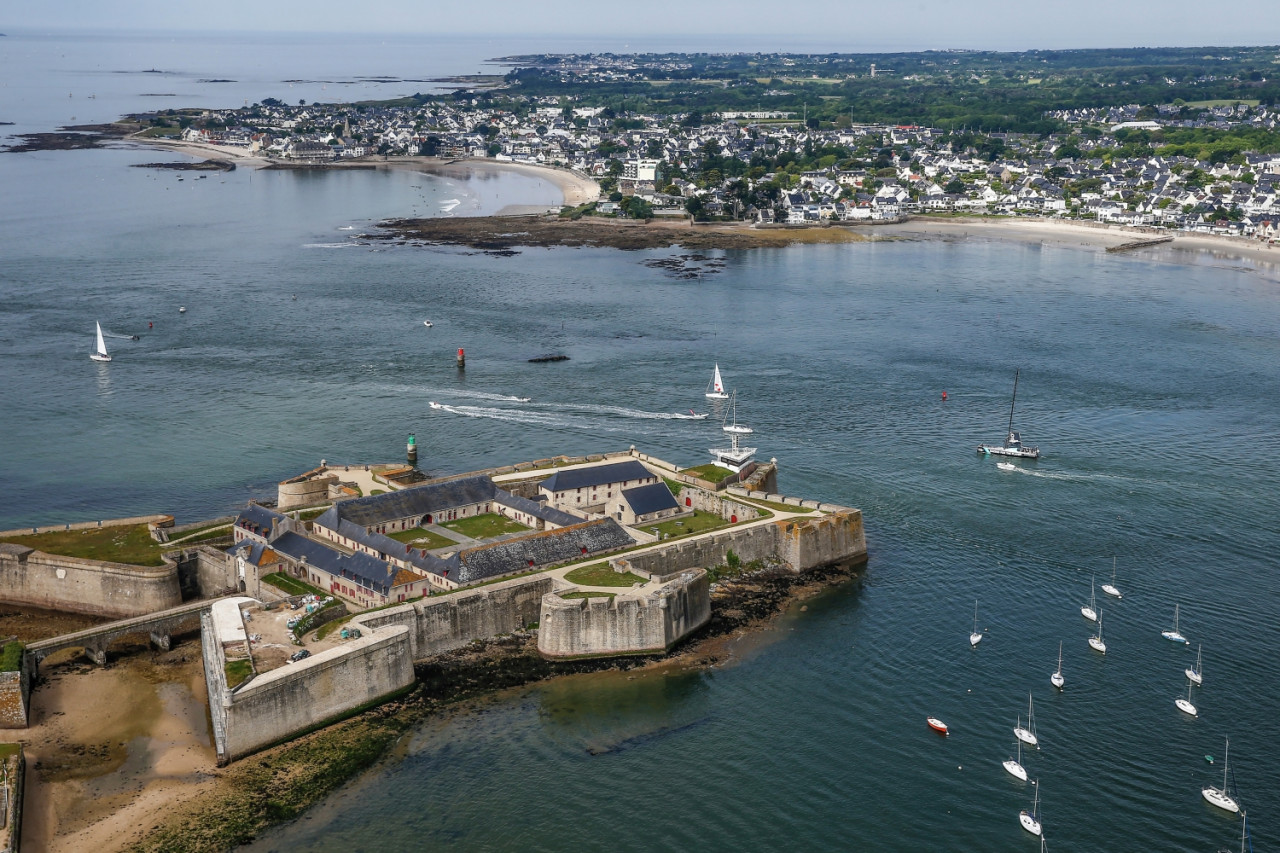 © Sailing Energy/The Ocean Race
© Sailing Energy/The Ocean Race
In the early minutes of the race, with the skippers contending with a light southeasterly breeze, it was the VO65s, which have daggerboards but not foils, who made the early running with the IMOCAs waiting their turn. But that could all change once the crews get offshore and the breeze starts to build from the north, northeast.
In the IMOCA fleet the leader after 45 minutes at sea was Robert Stanjek and his international crew on board Offshore Team Germany, the only one of the five IMOCAs entered in the race without foils.
She was being followed by Charlie Enright on 11th Hour Racing Team – the former Hugo Boss from the 2016/17 Vendée Globe – and then Thomas Ruyant on LinkedOut whose crew includes the new solo female round-the-world record-holder, Clarisse Crémer.
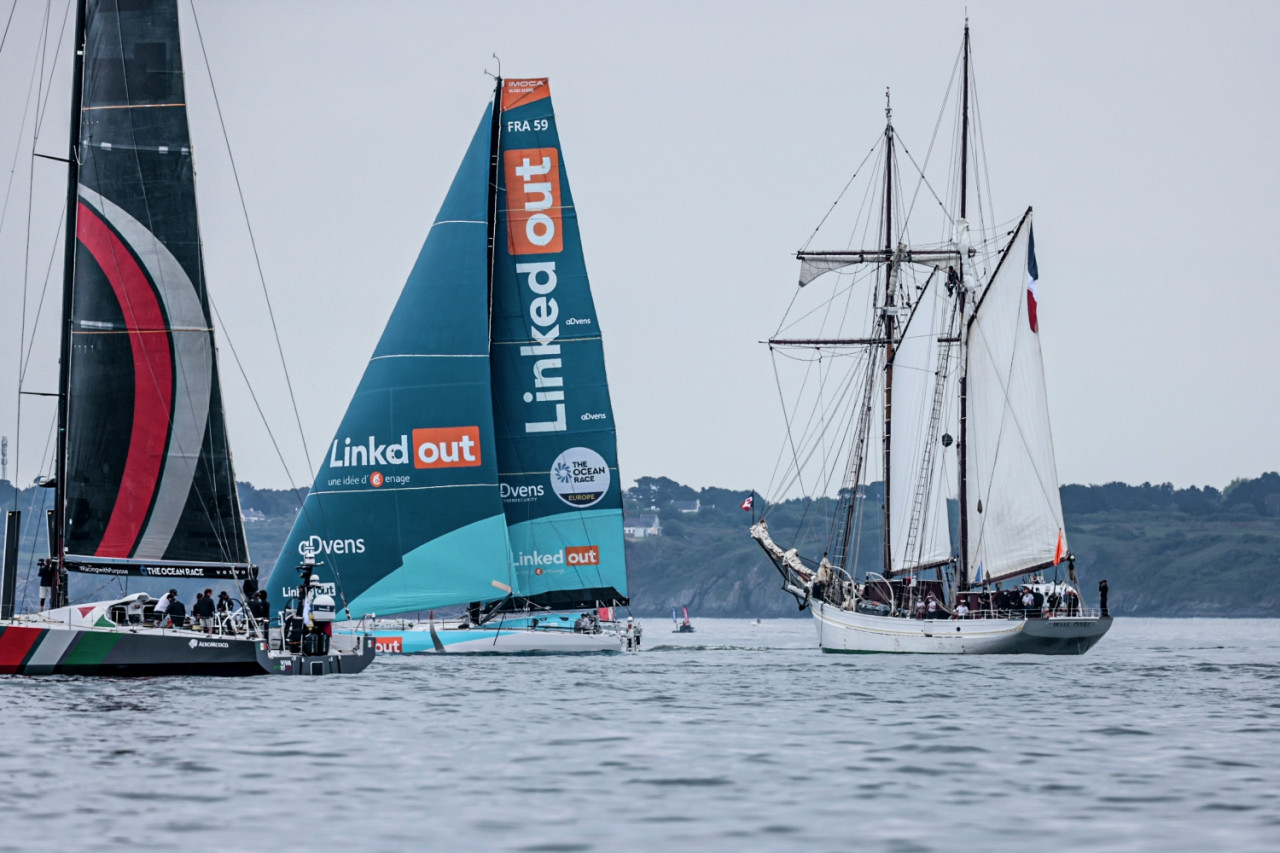 © Sailing Energy/The Ocean Race
© Sailing Energy/The Ocean Race
After LinkedOut, it was our first sighting of Bureau Vallee 3 – Louis Burton’s newly-acquired Sam Manuard design with a scow bow that he hopes to use to win the 2024-25 Vendée Globe. Bringing up the rear in the early stages, was CORUM L’Epargne skippered by Nicolas Troussel.
The stage to Cascais will be dominated to start with by the passage to Cape Finisterre from where the fleet is expected to head offshore to a virtual turning mark set several hundreds miles to the west, where the crews will turn onto a southeast heading for Cascais.
There will be great interest among designers, sailors and fans in how the IMOCAs perform when being pushed to the limit 24-hours-a-day and how they perform as against the VO65s, who have more crew on board but no foils and most of which are sporting sails that have done a fair few miles already.
Among the stars in the IMOCA firmament taking part in this race is Pascal Bidégorry on board 11th Hour Racing Team which is fitted with new foils. Speaking on the dock before setting sail, Bidégorry said he was looking forward to this new adventure in the IMOCA world.
“It’s a great challenge for us against the latest generation of boats,” he said. “And we have a boat full of quality and we will defend our assets. I’m the only Frenchman in the crew and it’s nice. My role is to look after all aspects of performance in anticipation of the new boat, and to learn how to use this boat with its new foils.”
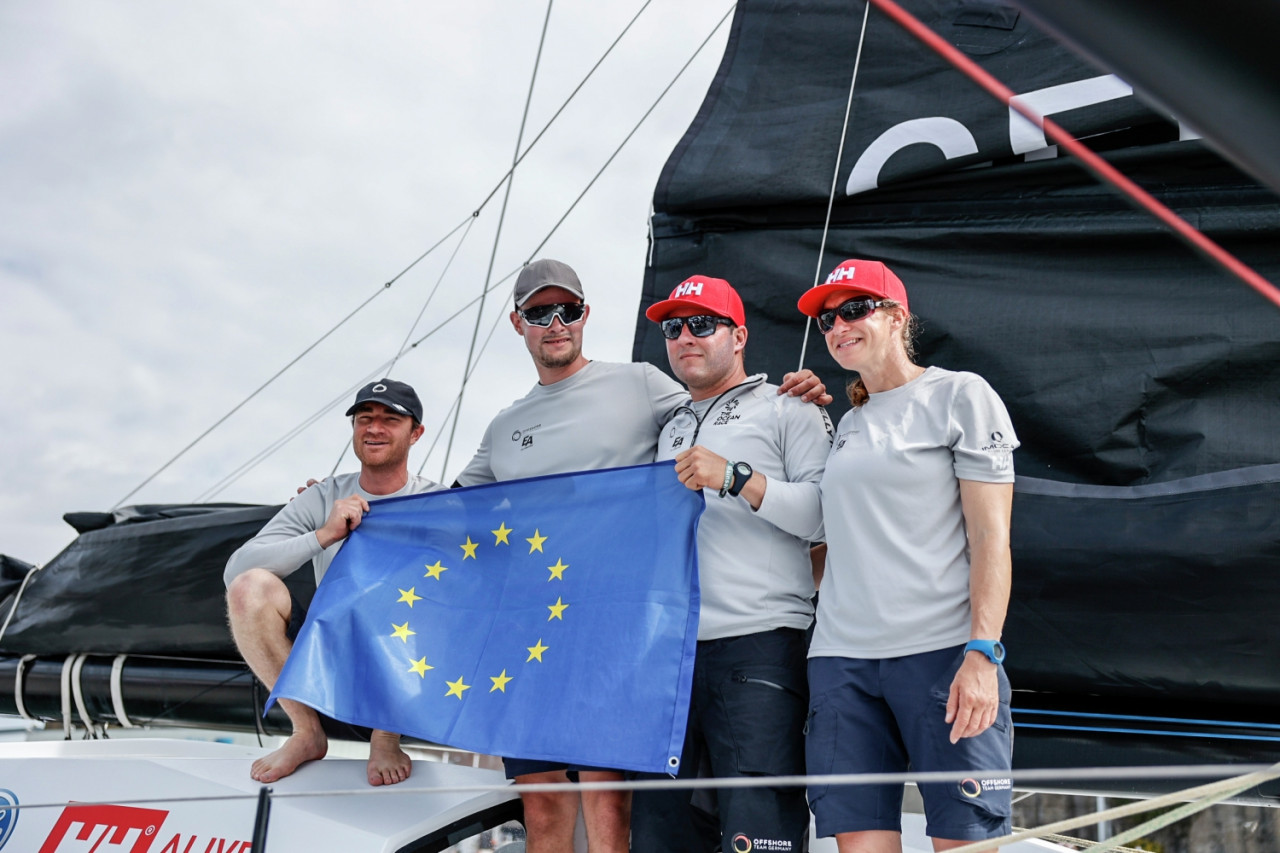 © Sailing Energy/The Ocean Race
© Sailing Energy/The Ocean Race
Benjamin Dutreux is racing on board Offshore Team Germany and is back on the water for the first time since the Vendée Globe. “It’s a bit hard to say whether you’ve recovered physically or mentally,” he said of the round-the-world race which he finished in ninth place on board OMIA-Water Family. “I think it’s important to get back on the water. Mentally I still can’t grasp what I achieved but I want to continue racing."
“I’m really happy,”he added. “We have a great team from different backgrounds. We have a mix of people from England and Germany – we all bring our own talents to the table to help each other progress.”
Crémer is looking forward to a more relaxing atmosphere after the stress of racing alone around the world. “I think I’m still not 100% fit after the Vendée Globe which was physically and mentally demanding, but I’m fit enough to take on a challenge like this,”she said.
“The crew is something new to me as I’ve mainly done solo and double-handed sailing. It’s nice to discover it though – it allows you to exchange ideas and learn a lot from the other sailors because each one has his own speciality.”
Louis Burton, meanwhile, is one of the biggest supporters of the move to fully-crewed racing in the IMOCA Class and he was determined to make the start of this race, despite being pressed for time to sort out his new boat.
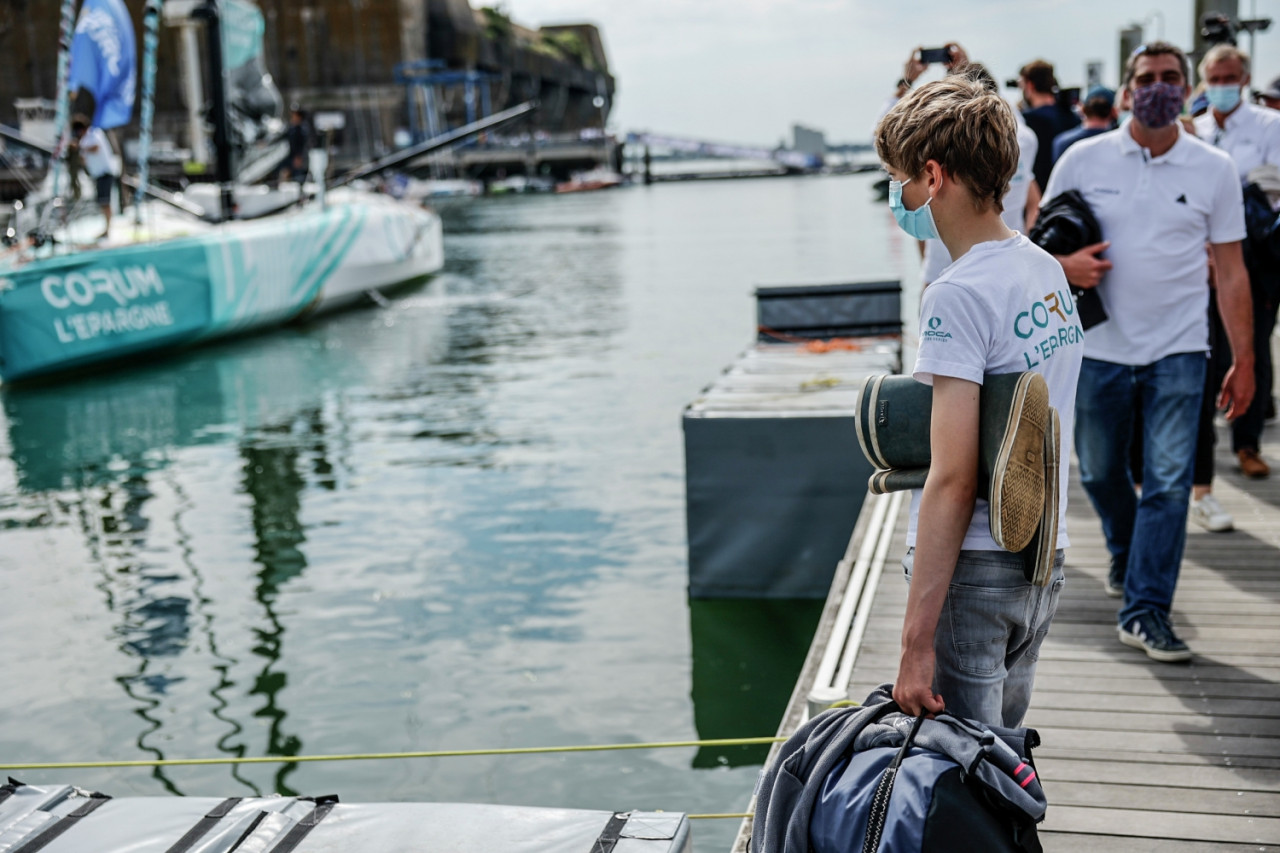 © Sailing Energy/The Ocean Race
© Sailing Energy/The Ocean Race
“It was important for us to be at the start of the race,”he said. “We’ve always been very much in favour of IMOCA boats taking part in the crewed race around the world, so we hope that more IMOCA boats will be there in the next few editions. But it’s already a great fleet this year.”
As the sailors settle down and find their rhythm, they will experience the sea and wind conditions gradually ramping up as the IMOCA thoroughbreds begin to foil. The early challenge for all the crews will be trying to settle into a watch system and allow those not on watch to get some rest. How well the teams manage that aspect of this race is likely to be a critical factor in deciding the overall winner in the IMOCA ranks.
Ed Gorman
Teams info
THE LIST OF 40 SKIPPERS UNVEILED
The 2020 edition of the Vendée Globe has generated unprecedented interest. As a result, the organisers decided to increase the number of places at the start to 40 for the 2024 edition. 44 skippers applied for this 10th e…
•••Charlie Dalin: The podium in IMOCA is much harder to reach now
Charlie Dalin has particularly enjoyed his convincing win in the New York Vendée-Les Sables d’Olonne race. And that’s partly because he knows that even getting on the podium in the IMOCA Class is becoming more difficult.
•••